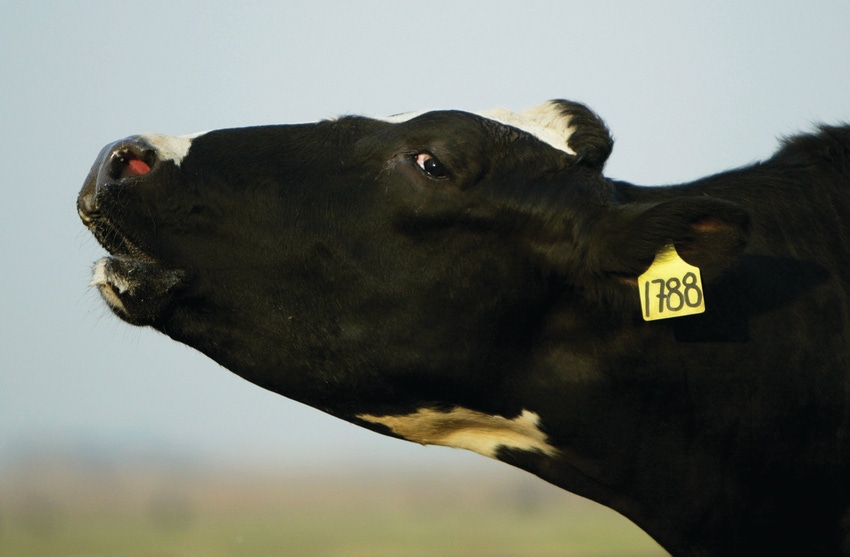Mid-infrared spectroscopy, paired with other on-farm data, may allow producers to better predict likelihood cow will conceive to first insemination.
January 6, 2020

In Australia, Agriculture Victoria research scientists have developed a model that can predict how likely a dairy cow is to conceive to first insemination with up to 77% accuracy.
The research combines mid-infrared spectroscopy (MIR) — which shines an infrared light through cows’ milk — with other on-farm data for 3,000 dairy cows from 19 herds across Australia, the announcement said.
Cow fertility is a key driver of profitability for the dairy industry, but until now, there has been little research aimed toward enabling farmers to predict the outcome of insemination, the researchers said.
Agriculture Victoria research scientist Jennie Pryce, who led this DairyBio initiative, said dairy farmers could use this research to optimize their breeding decisions, thereby increasing farm productivity and profitability.
“The expected outcome of this research is a valuable prediction tool for farmers who choose to herd-test in early lactation, before the (breeding) season starts,” she said. “We are now collaborating with DataGene and the herd test centers, working towards implementing the research and providing the best advice for farmers.”
Agriculture Victoria research scientist Dr. Phuong Ho added that farmers could optimize breeding decisions using prior knowledge of how likely an individual cow is to become pregnant after insemination.
“Sexed or premium bull semen could be used for cows predicted to have a high likelihood of conception, whereas cows with predicted poor fertility could be mated using semen from beef bulls, multiple doses or semen from bulls of known high genetic merit for fertility,” Ho said.
“Additionally, farmers might adjust feeding or management strategies to help predicted poor cows improve their physiological condition and probability of conception,” he added.
The model combines information from milk MIR samples with information on fertility genomic breeding values, cow genotype, milk yield, the age of the cow at lactation and days in milk when the sample was taken and at insemination, the researchers said.
The model is currently undergoing extensive validation using data from New South Wales dairy farms.
This research is part of the DairyBio initiative of Agriculture Victoria, Dairy Australia and the Gardiner Foundation, in collaboration with DataGene. The paper, "Classifying the Fertility of Dairy Cows Using Milk Mid-Infrared Spectroscopy," was published in the Journal of Dairy Science.
You May Also Like


.png?width=300&auto=webp&quality=80&disable=upscale)
